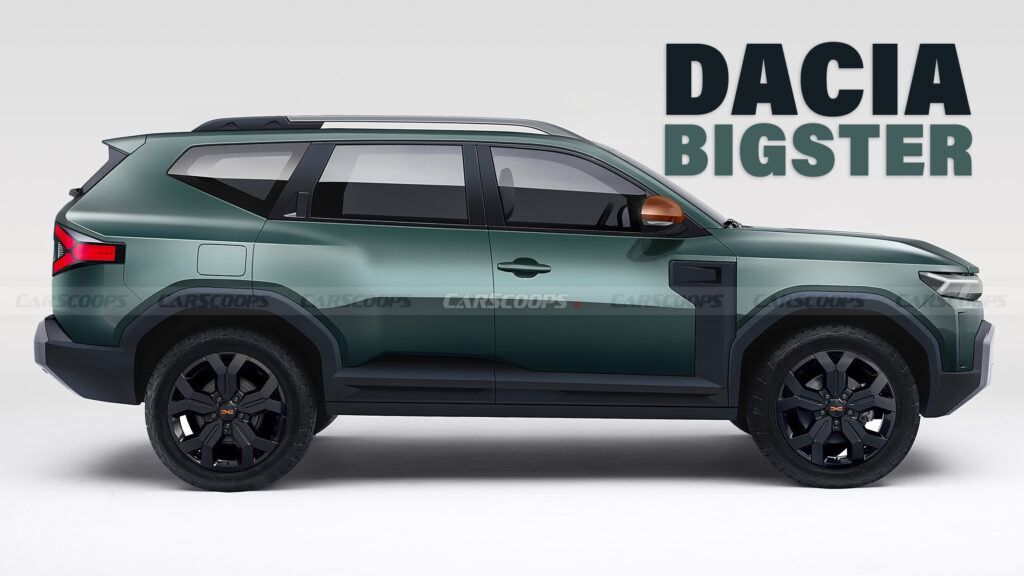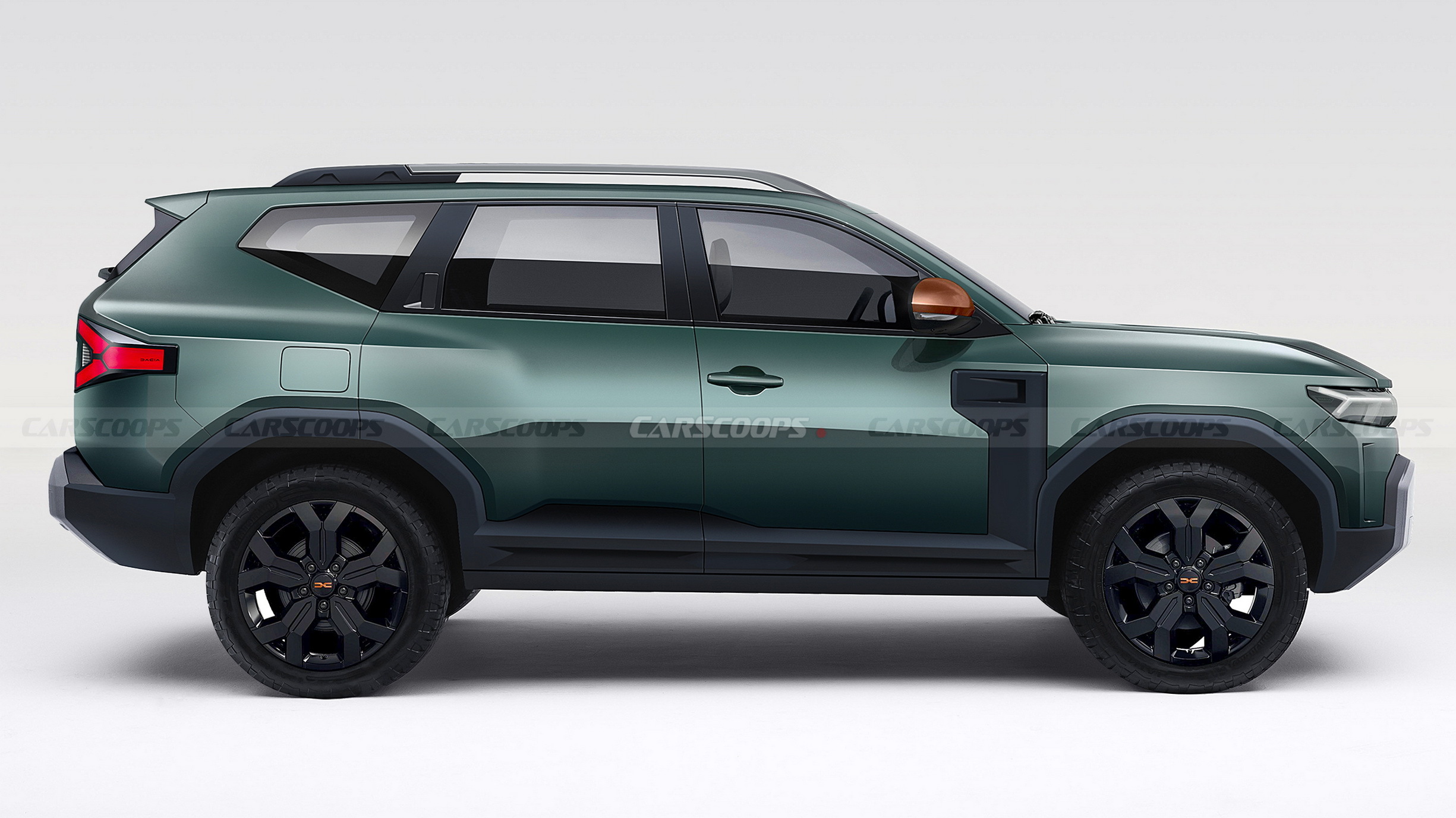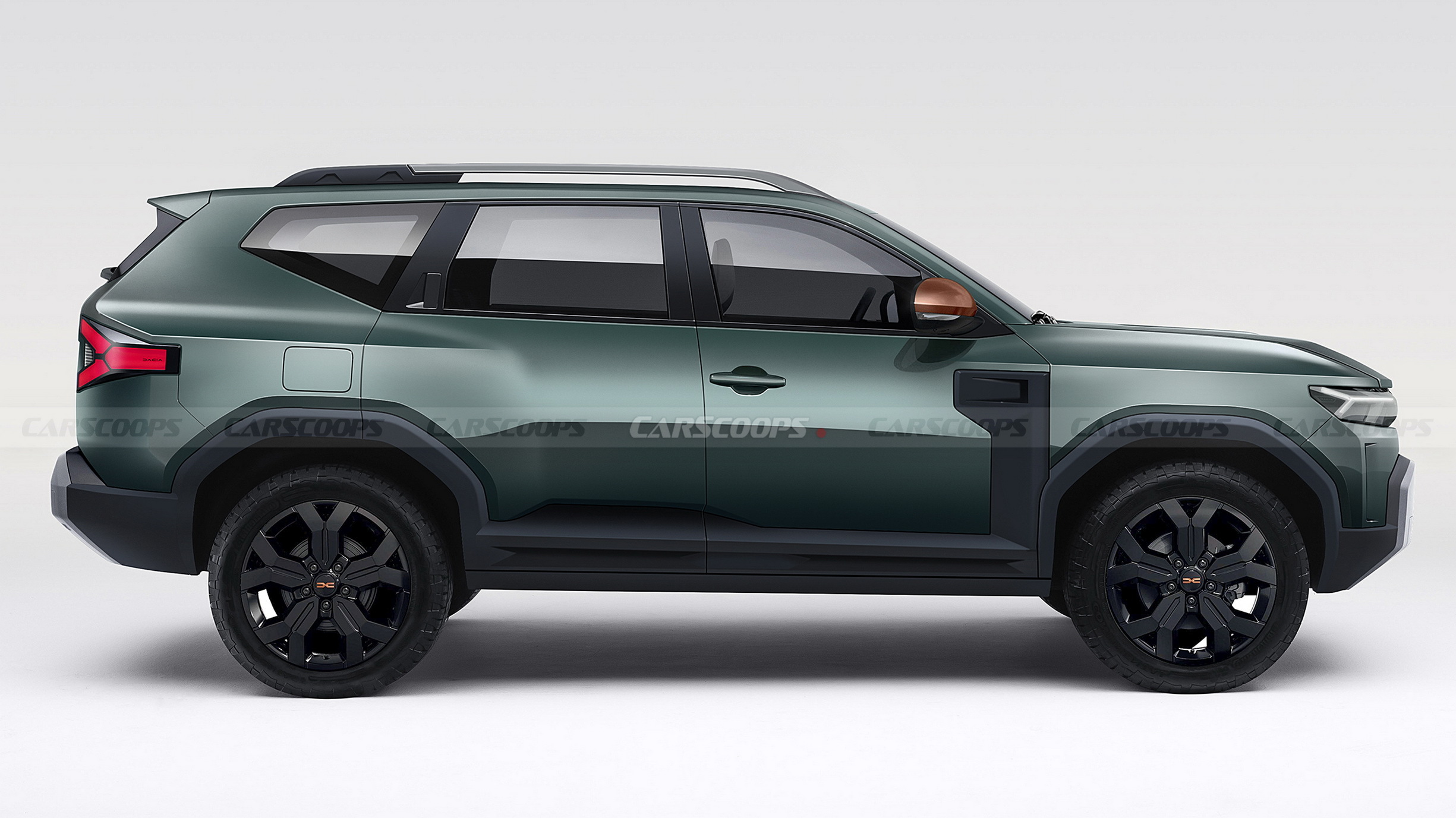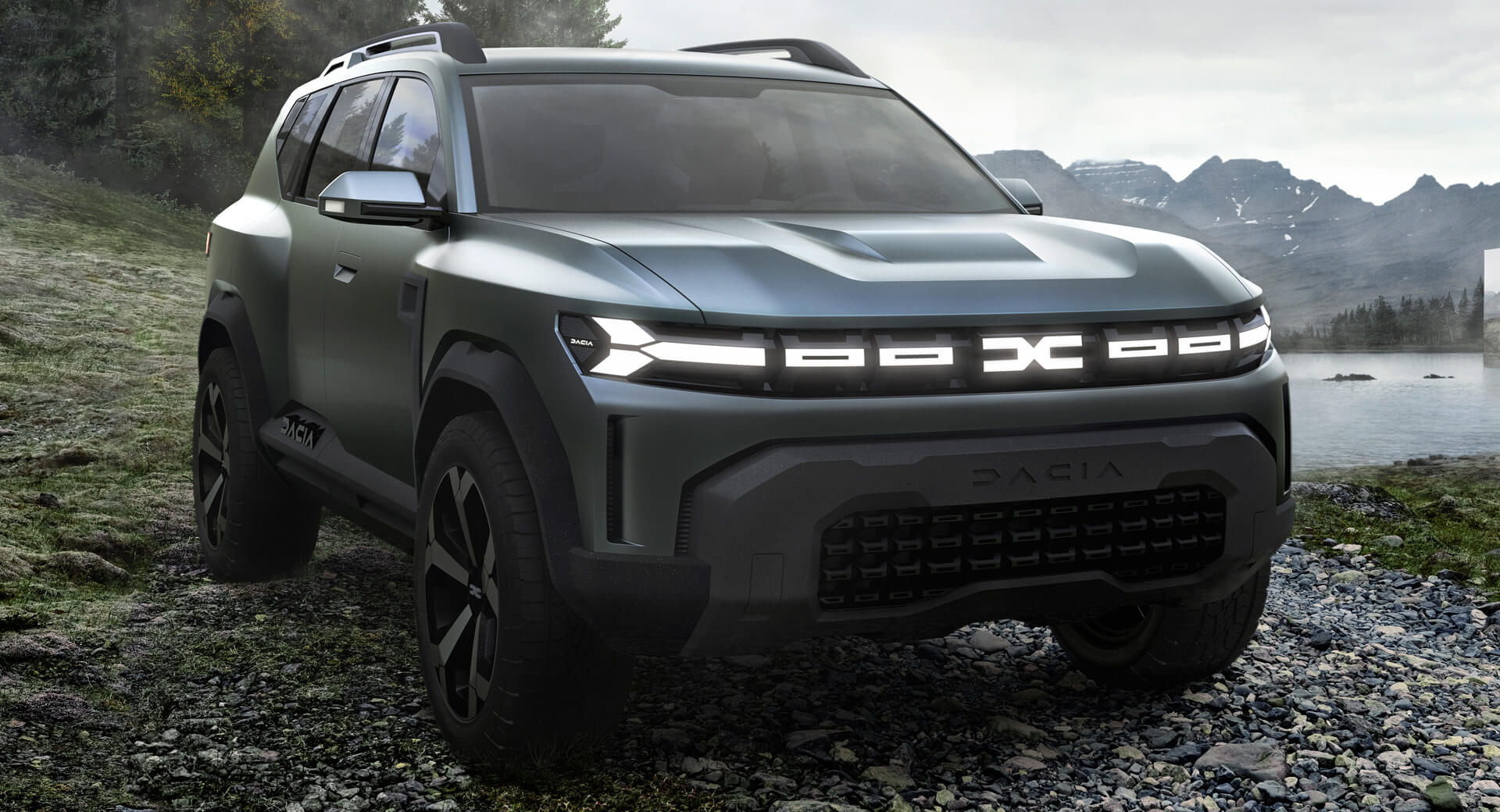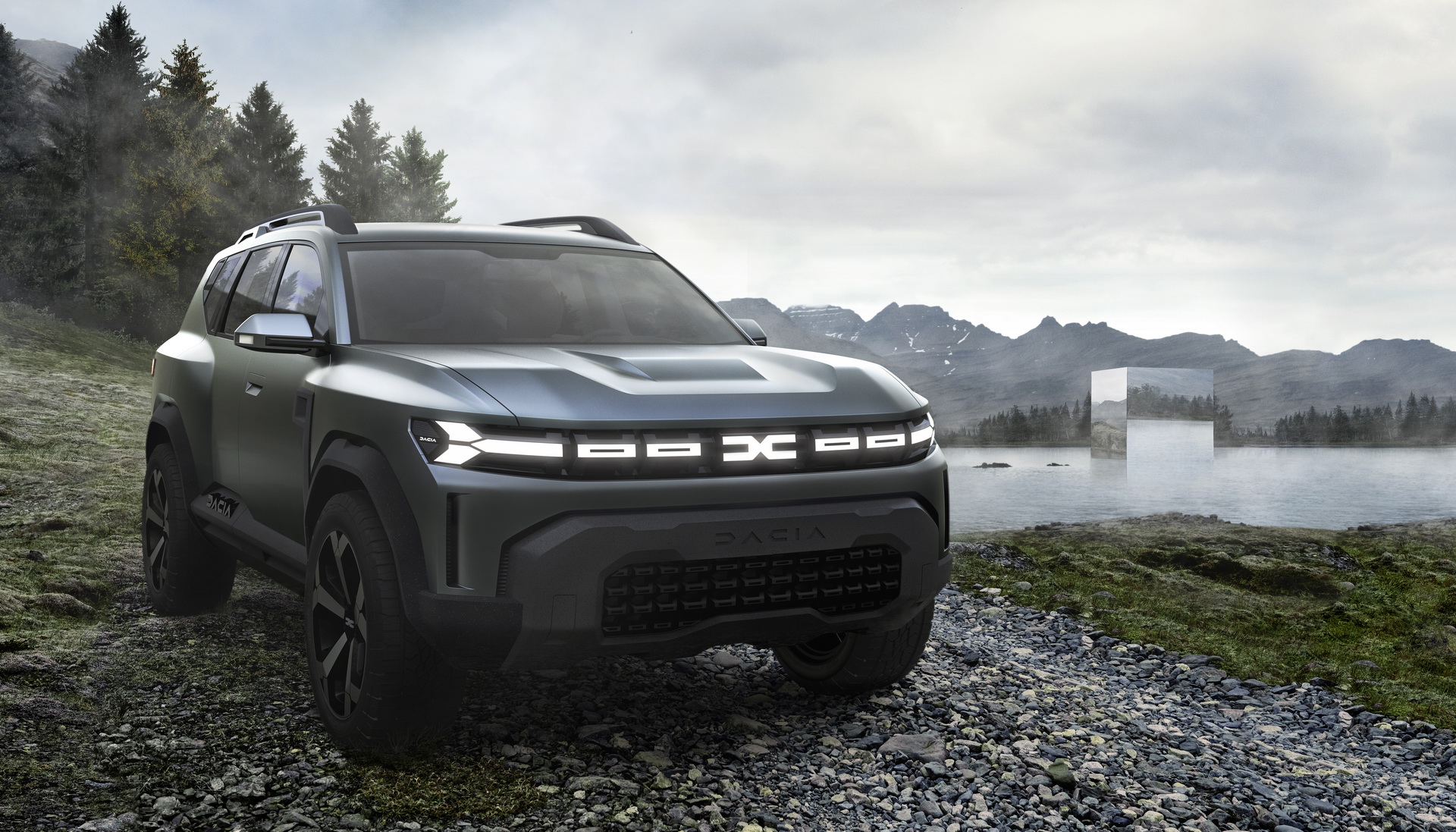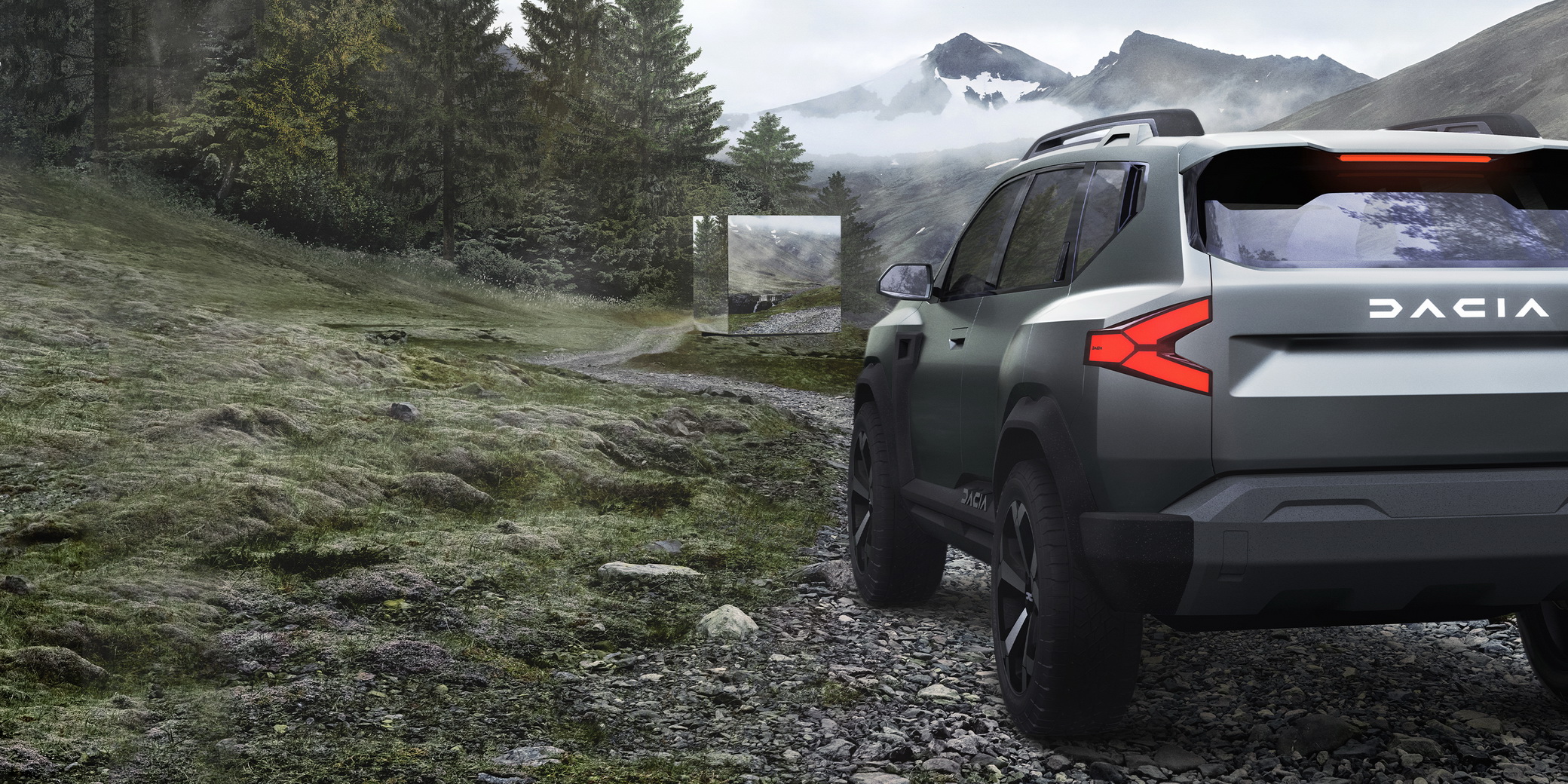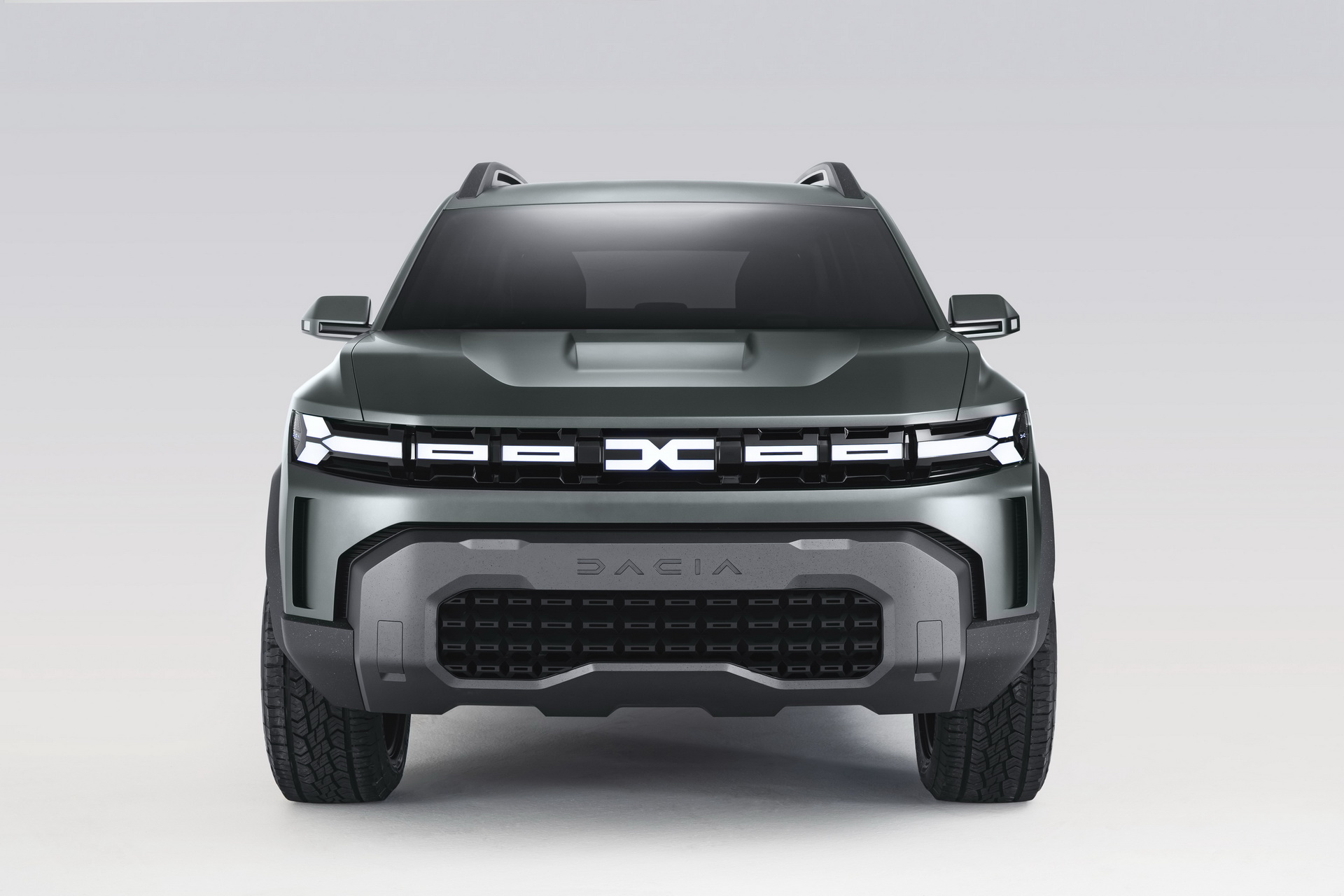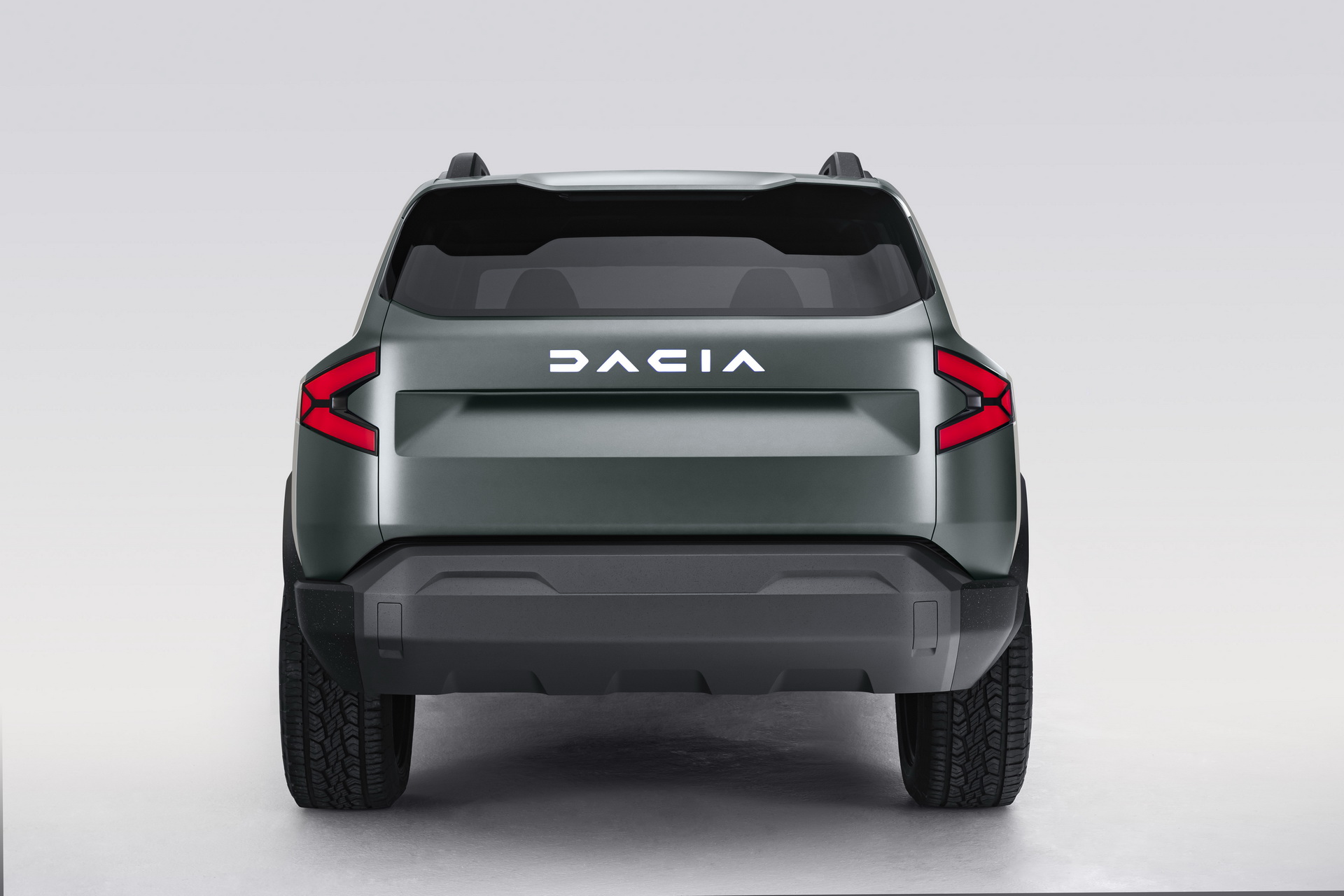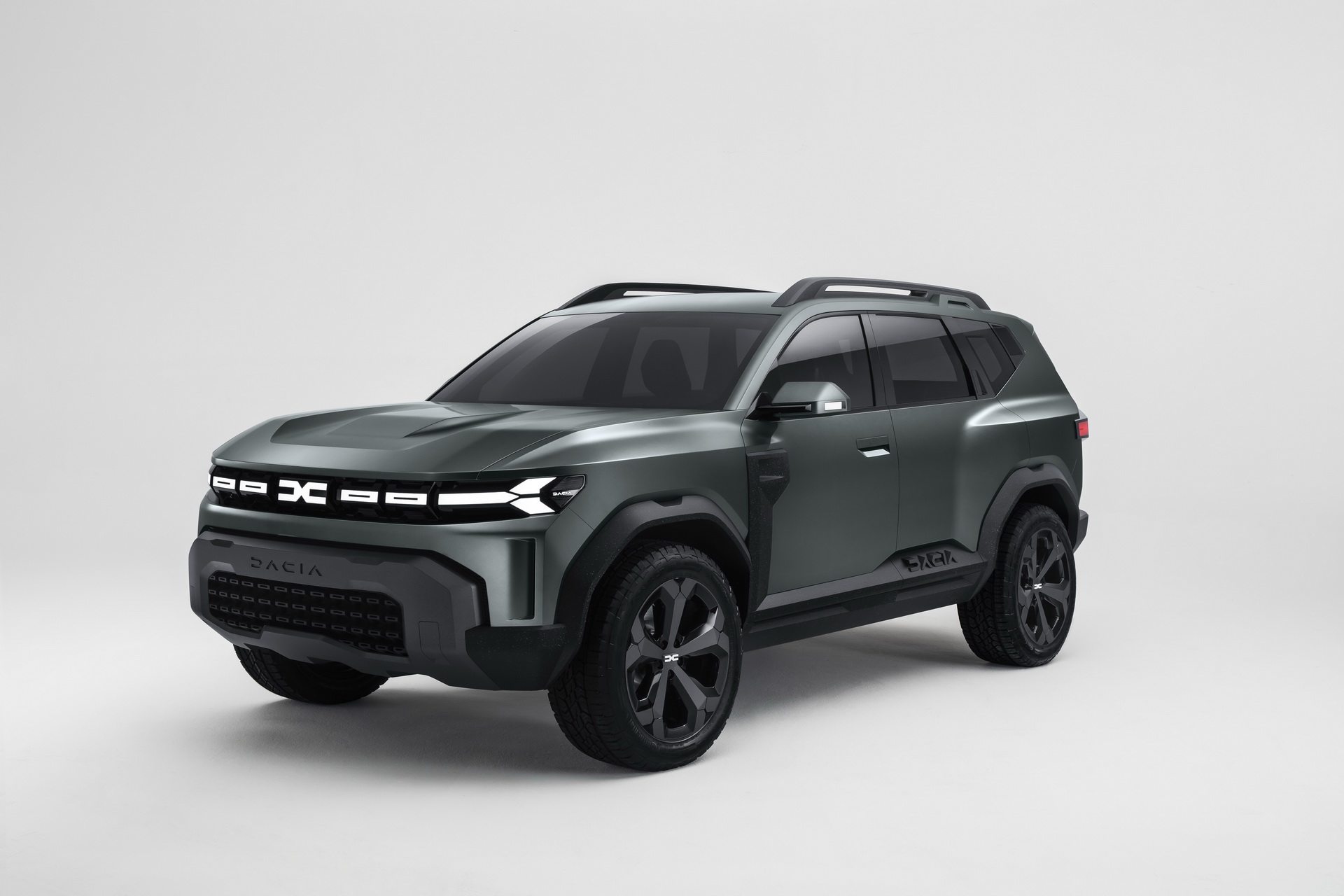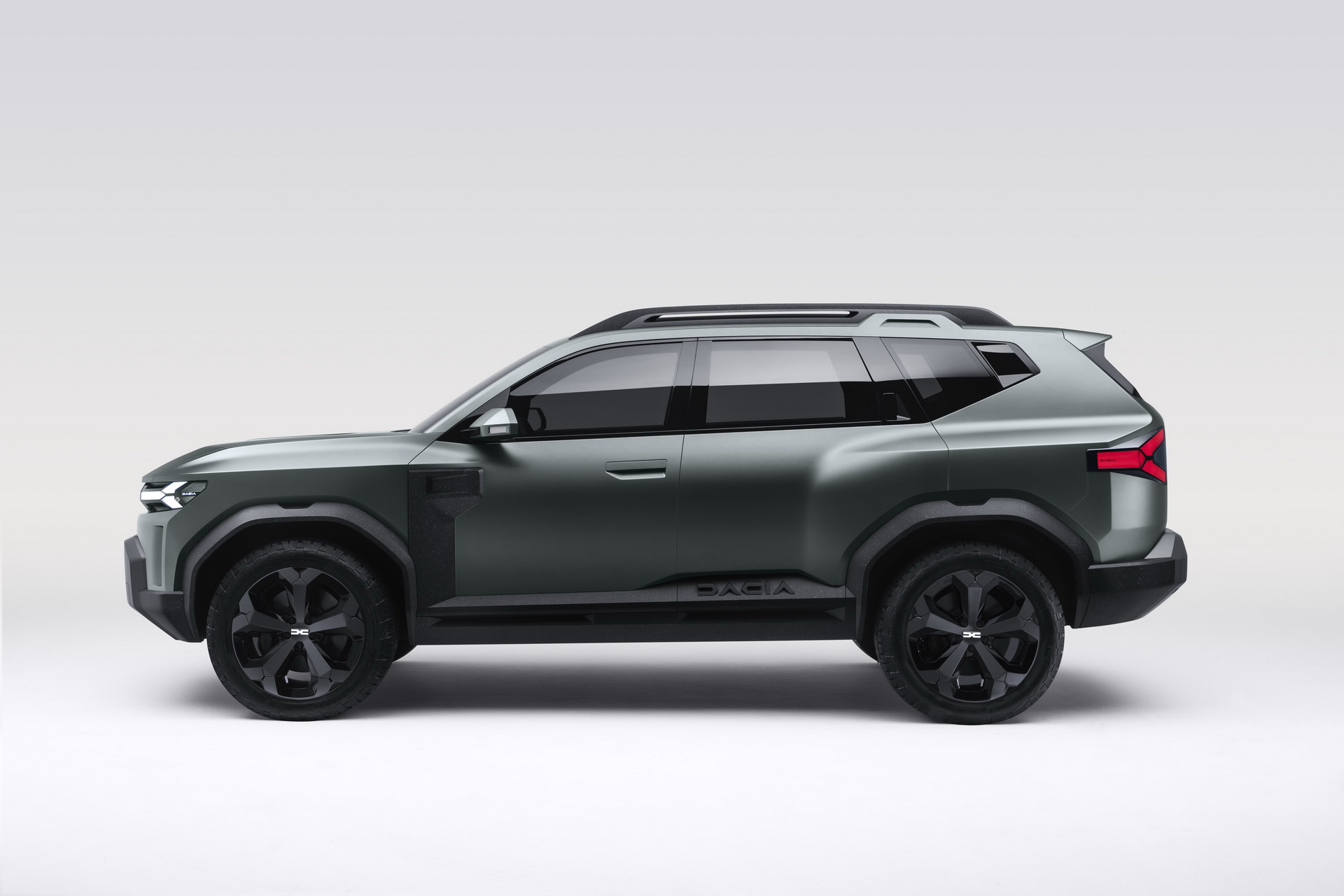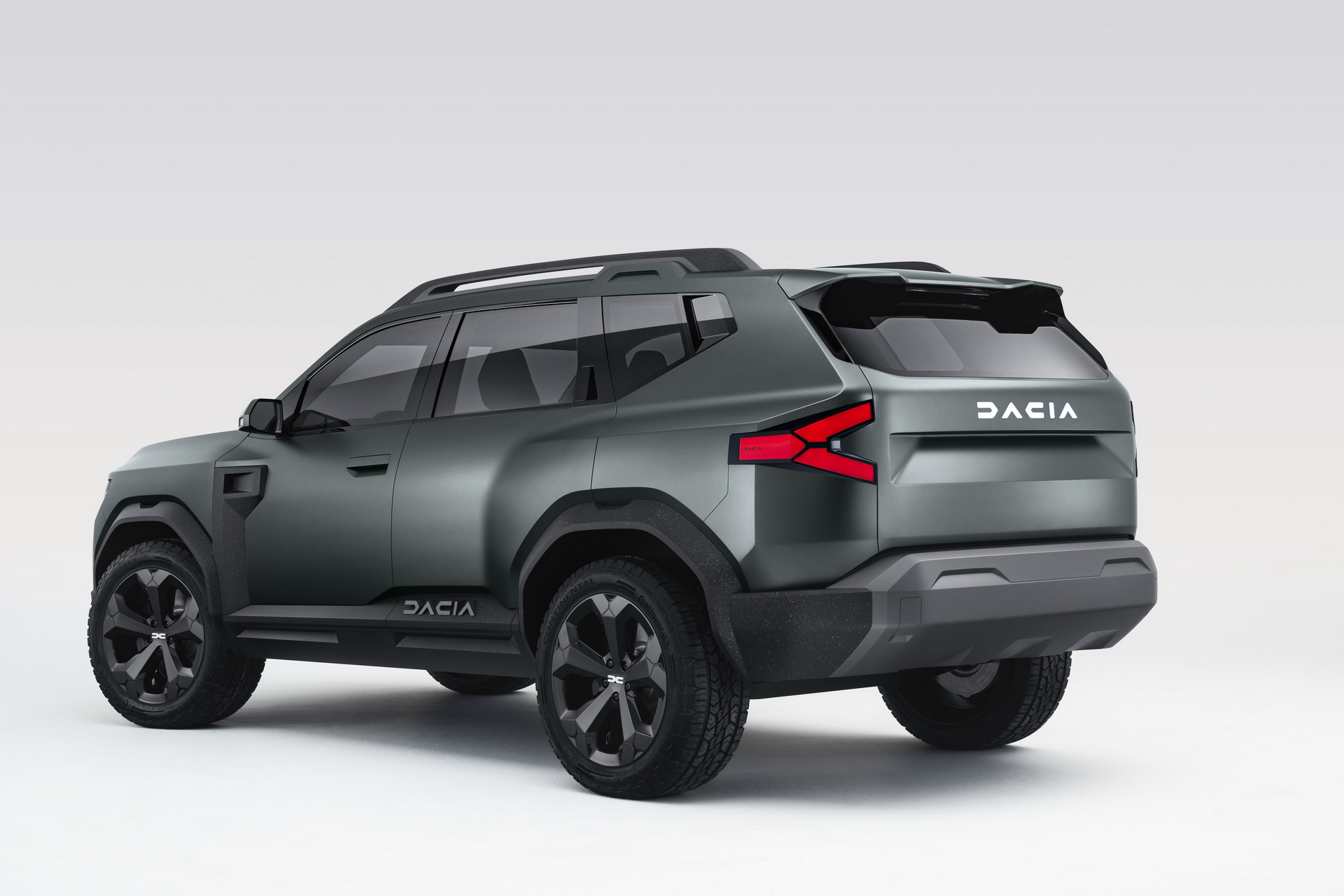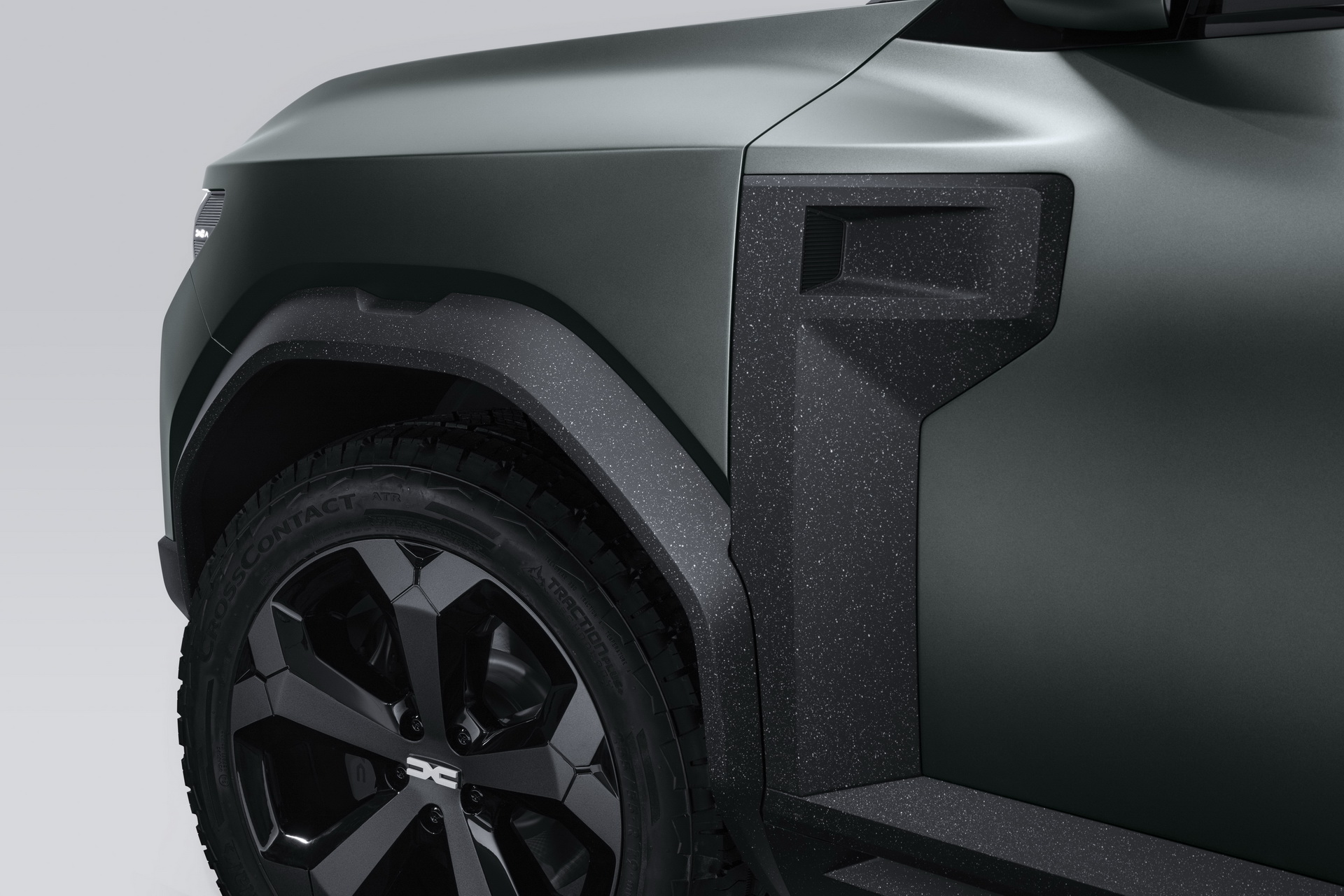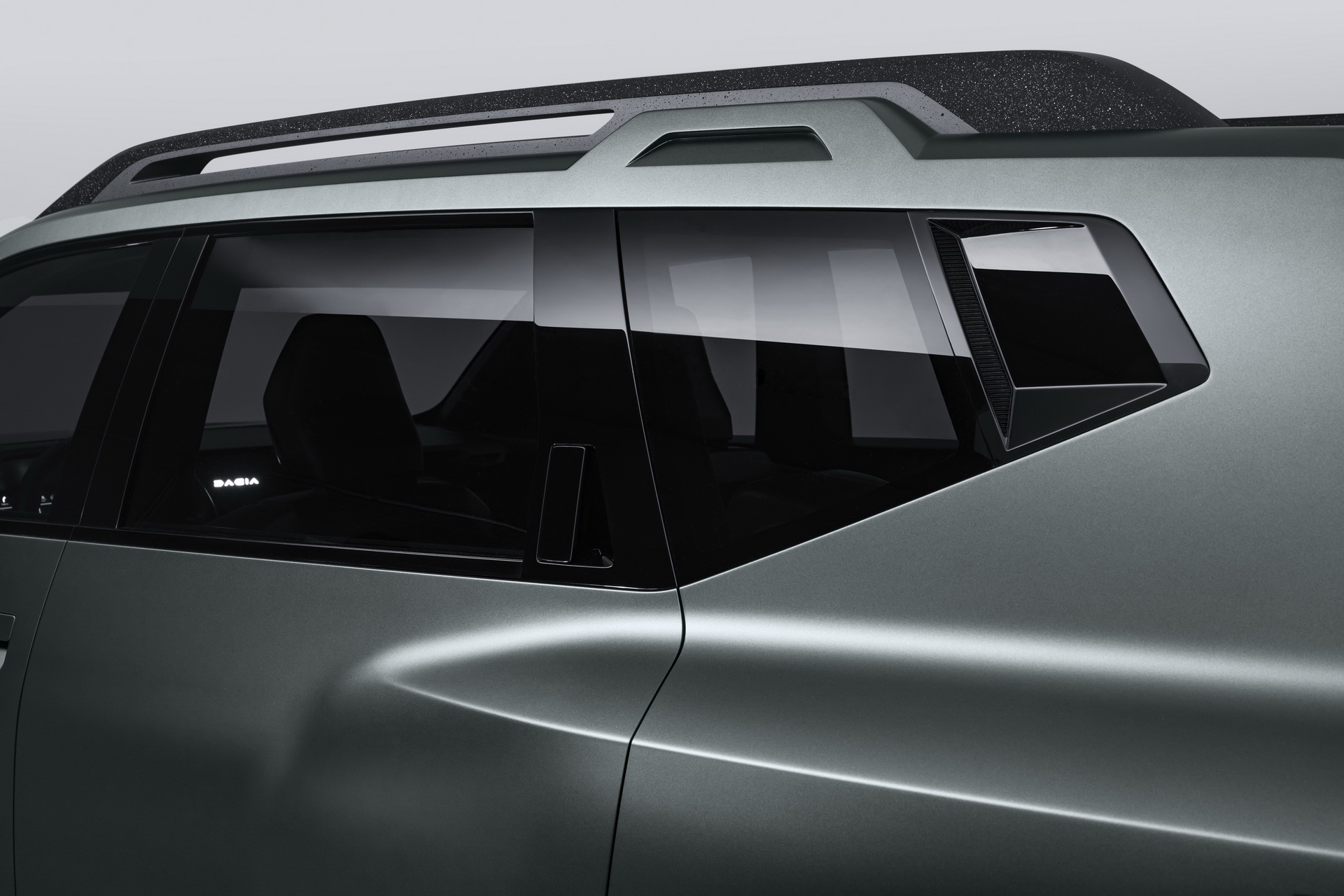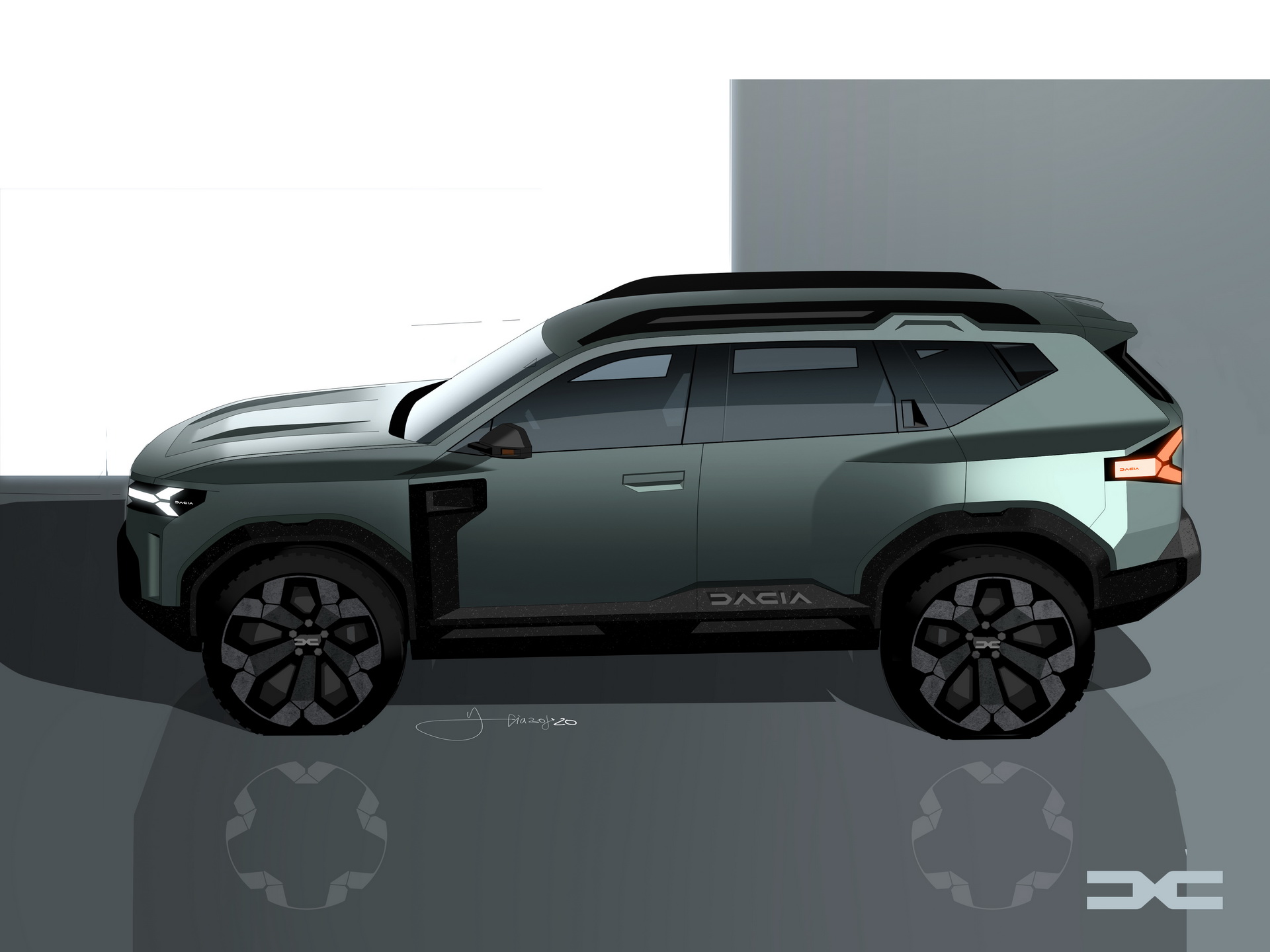The Duster might be the shining star of the Dacia range, but a larger and similarly rugged SUV is under development, set to become the flagship of the Romanian brand. The Dacia Bigster, previewed by the 2021 concept with the same name, will launch in 2025, combining the Duster’s merits with a more spacious cabin for the competitive C-SUV segment.
The production model is expected to mirror the styling of the Dacia Bigster Concept, with only a few toned-down features. Note that the concept is the one that introduced the brand’s evolved styling language as well as the “Dacia Link” emblem and the new grille which have already been adopted by the entire lineup.
More: Everything We Know About The 2024 Dacia Duster
Illustration: Jean Francois Hubert/SB-Medien for CarScoops
As depicted in our speculative rendering, changes from study to production will likely be limited to more conventional LED graphics, different alloy wheels, and a few details on the bumpers. On the other hand, the model is expected to retain the pronounced fenders, boxy wheel arches, oversized skid plates, and generous ground clearance of the concept, on par with the next-gen Duster. In fact, the two SUVs will reportedly share several body panels including the entire front clip and possibly the taillights, making the Bigster look like a stretched Duster.
Spacious Interior
Practicality is a key aspect of Dacia’s identity, and the Bigster will offer ample interior space. It’s likely to come in both a three-row 7-seater configuration and a standard 5-seater version, catering to those who prioritize cargo space. This would make it Dacia’s second 7-seater model, alongside the Jogger crossover estate. Additionally, Dacia’s new range of accessories is expected to enhance the Bigster’s adventurous character, making it an ideal companion for camping and outdoor activities.
Read: Converting The Dacia Jogger Into A Budget Four-Seater Limo
The dashboard of the Bigster could potentially be shared with the next-gen Duster as a cost-saving measure. The most basic entry-level trim may forgo a touchscreen, opting for smartphone integration solutions, and may lack advanced driver assistance systems (ADAS). This cost-effective approach aims to provide a budget-friendly option for customers.
At the other end of the spectrum, there will be a high-end “Extreme” trim, a popular choice in other Dacia models. This trim will include a large infotainment display and a digital instrument cluster, marking a first for the brand. Additional features may comprise durable and water-resistant fabric upholstery, colorful accents throughout the cabin, and textured surfaces to enhance the feel of hard-touch plastics.
The Longest Dacia
The Dacia Bigster concept measured 4.6 meters (181 inches) in length, placing it in close proximity to vehicles like the Nissan X-Trail and Skoda Kodiaq in the larger D-SUV segment. If this measurement is maintained in the production version, it will make the Bigster the longest Dacia model, exceeding the 4,547 mm (179 inches) of the Jogger.
Despite its larger footprint, the Bigster will ride on the CMF-B architecture which is usually reserved for smaller vehicles within the Renault Group. This platform is set to become the basis for the entire Dacia lineup, already serving as the foundation for models like the Sandero, Sandero Stepway, Logan, Jogger, and Duster. This shared architecture strategy enables Dacia to provide its vehicles at a more budget-friendly price point.
Petrol And Hybrid Options
2021 Dacia Bigster Concept
The Bigster’s powertrain options are anticipated to align with those of the next-generation Duster, encompassing both petrol and hybrid choices. Consequently, it will feature Renault’s 1.2-liter three-cylinder engine equipped with a 48V mild-hybrid system to reduce emissions, coupled with an e-AWD system. Given the importance of robust off-road performance for Dacia’s SUV flagship, both the Bigster and Duster are expected to offer at least one powertrain configuration that delivers power to all four wheels.
Stepping up the electrification game, the Bigster is rumored to be available with a self-charging hybrid powertain, distinct from the current setup in the Dacia Jogger Hybrid, and it will likely utilize the next generation of Renault’s E-Tech technology. Additionally, there are speculations about the possibility of a plug-in hybrid (PHEV) version, which would mark a first for Dacia.
Last but not least, the Romanian brand could also offer the SUV with a bi-fuel (LPG/petrol) engine, serving as an alternative to the discontinued diesel in terms of low running costs.
Priced To Be A Bargain
Dacia aims to price the Bigster competitively, aligning it with models from a segment below. This positioning makes it an attractive option for those seeking an affordable yet spacious and rugged-looking SUV. It is expected that the Bigster will target entry-level versions of vehicles like the Skoda Karoq/Kodiaq and the Citroen C5 Aircross, rather than competing with more premium SUV offerings such as the Peugeot 3008/5008.
Reading between the lines, the Dacia Bigster will likely be the cheapest C-SUV in the Renault Group, coming at a lower price point than the Nissan Qashqai and Renault Austral which are based on the more sophisticated CMF-C architecture. We could see pricing start from as low as €22,000 ($23,600), representing a premium of around €3,000 ($3,200) over the next-gen Duster.
The Dacia Bigster will arrive in European dealers sometime in 2025, one year after the closely related Duster. The latter is expected to debut later this month ahead of its market launch in 2024, giving us a better idea of what to expect from its bigger brother. The two SUVs will be produced in the same plant in Mioveni, Romania.
Note: This story includes a speculative rendering which, just to be clear, has no official ties to Dacia’




